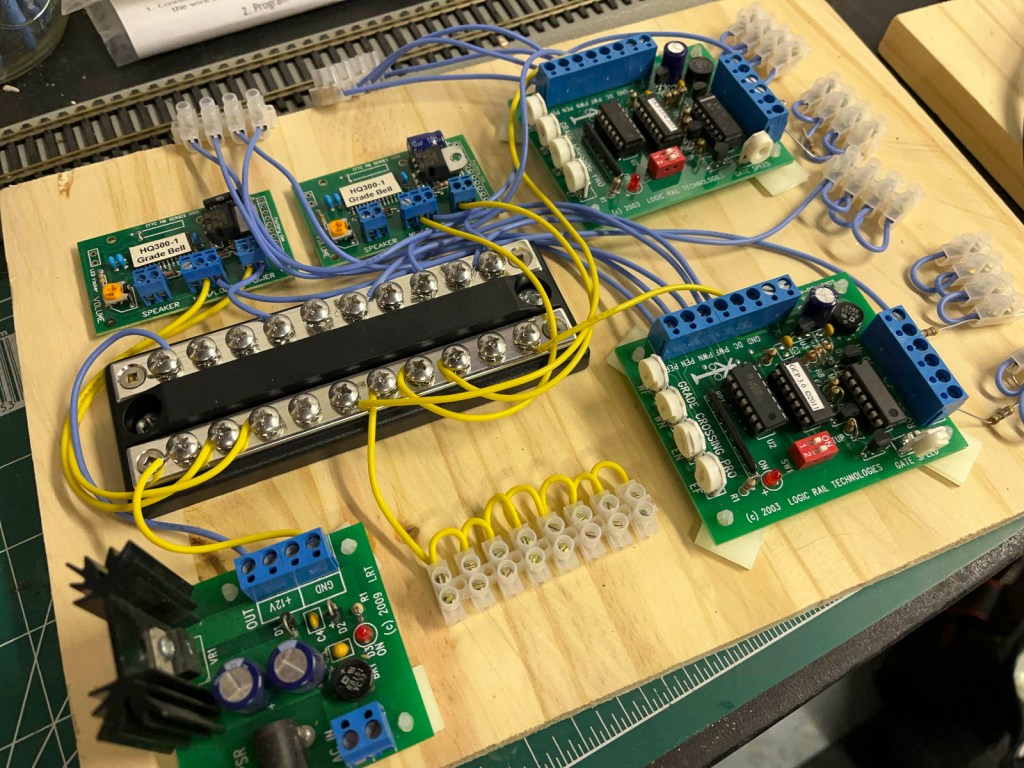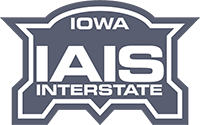
By far, the one railroad element we interact with most must be grade crossings. Doesn’t matter if we’re the most devoted prototype railfan or if we’re only vaguely aware that flanged-wheel transportation exists somewhere in the world. At some point, we all stopped behind a gate, a flasher, or crossbuck and waited for a train to pass.
The Hills Line is no exception to this mantra. Due to its history as an electric interurban, the industrial spur is covered with all manner of roads at grade, from private farm crossings to multi-lane highways. Despite this gluttony of availability, only two roads have automatic crossing protection: US Highway 6 in Iowa City and Main Street in Hills. The lack of volume makes fully animating those two thoroughfares relatively straightforward.

Fortunately, I already had much of the required equipment since they were left over from my previous layout, the IAIS Grimes Line. Despite being mothballed since that layout was dismantled in February 2018, the Grade Crossing Pro circuits picked up right where they left. A testament to Chuck and his team at Logic Rail Technologies.
The crossing at US Highway 6 is a simple single-track affair. However, Main Street in Hills has the main track and the house/runaround track, each protected by its flashers. While there will never be a situation where I have two separate trains on both tracks simultaneously, I still need to use separate circuits for both. Otherwise, a train on one track will activate the flashers for both.

Since fully functional grade crossings require a fair amount of wiring, I prefer to preassemble as much as possible at the workbench. This limits the amount of time needed to crawl around underneath the benchwork trying to hook up wires. I build a giant circuit board on a small piece of scrap wood, arranging and connecting each component with some logical sense of organization.

One of the keys is signal distribution since a DC source is needed in multiple locations. I’ve had much success using Blue Sea Systems’ Common BusBars to get power where required. I also use barrier strips and other quick-release connectors to quickly hook up the multitude of wires and troubleshoot when the need arises.
Ultimately, active grade crossings add visual and kinetic energy to a model railroad. That helps even the most uninformed visitor look at the scene and say, “I’ve been there!”

Standard disclaimer: I’m in no way affiliated with either Logic Rail Technologies or Blue Sea Systems, nor was I compensated in any way for this post. I’m just a satisfied customer.



It truly is amazing how much positive impact something like this makes on a layout; more than would be expected. I also added crossing lights and sound on a branch line crossing. I just thought it would be a gee-whiz thing. But as it turns out, it is just too cool to have the lights and bell come on as the train is approaching – adding a level of excitement and anticipation… just like the real thing! Of course now I have to do the same for the other crossings. Ah well….
LikeLiked by 1 person
“I’ve been there!” at both crossings several times. I am still waiting to see a train at either crossing. Someday it will happen.
LikeLiked by 1 person